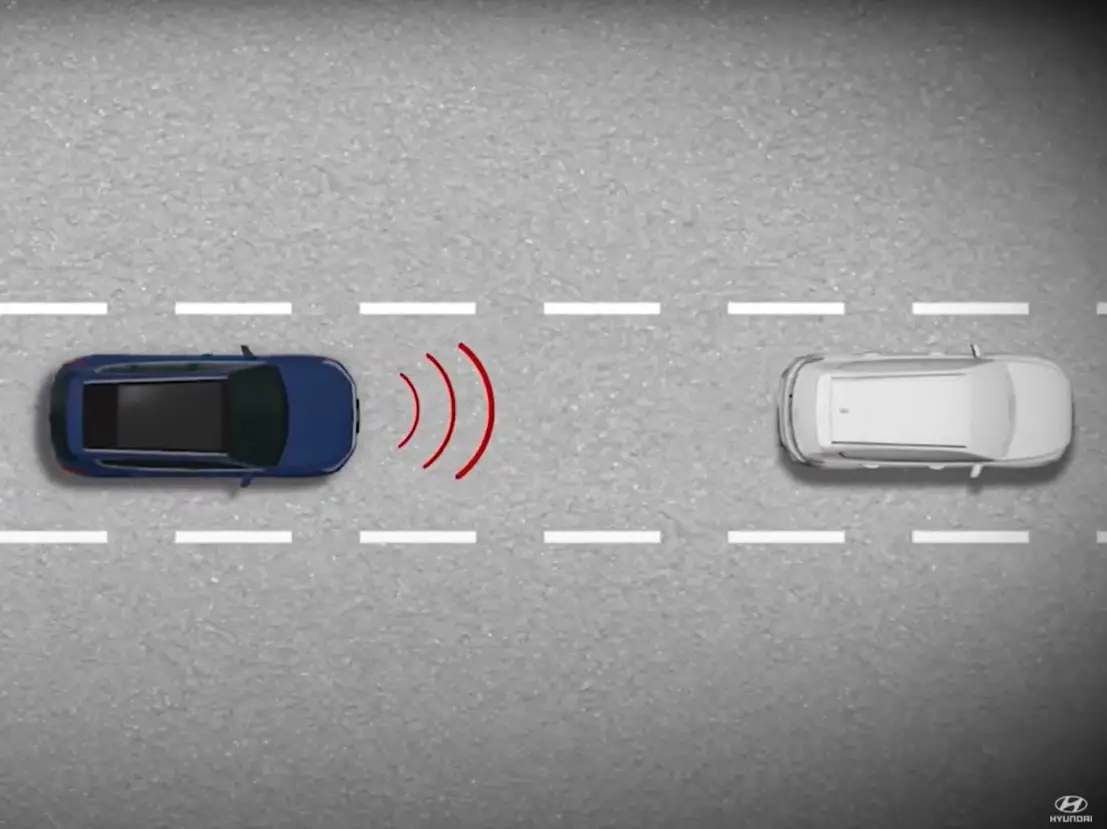In 2016, Hyundai Motor America joined the National Highway Traffic Safety Administration (NHTSA), Insurance Institute for Highway Safety (IIHS), and a number of automakers in committing to make automatic emergency braking standard on all new cars no later than NHTSA’s 2022 reporting year.
Hyundai announced this week that it has met that goal two years ahead of schedule. During the past year, 96 percent of all Hyundai vehicles produced for sale in the U.S. offered automatic emergency braking as standard equipment.
Automatic emergency braking is also called forward collision avoidance assist. It works using technology to sense when the vehicle is traveling at a rate of speed and in a direction that may cause it to crash into the vehicle, cyclist, or pedestrian ahead of it. Then, the car’s safety system will apply the brakes in an effort to not make that collision occur. Some systems will also steer the car in an effort to mitigate a crash. Not all systems detect cyclists or pedestrians. Some systems also have large animal detection technology that pairs with automatic emergency braking to avoid hitting animals like moose and elk.
When the agreement came to fruition, automatic emergency braking was available on the 2017 Hyundai Elantra, Santa Fe, and Santa Fe Sport in addition to the 2016 Hyundai Sonata, Tucson, and Genesis. Since that time, the Elantra, Santa Fe, and Sonata have all been redesigned. The redesigned Hyundai Tucson was recently unveiled. Genesis has become its own brand. The model previously known as the Hyundai Genesis has evolved in the Genesis G80.
At that time, Hyundai’s automatic emergency braking technology used forward-facing radar and camera to to detect a vehicle or pedestrian, and warn the driver of a potential collision. If the driver did not react to avoid the impact, the system will apply emergency braking.
Today, the system uses a camera or radar to determine if a crash is imminent. If it is, the system sounds an alarm and flashes a visual alert to gain the driver’s attention. Depending on the circumstances, the technology can apply the brakes to avoid impact or minimize damage.
“Hyundai’s AEB safety technology, Forward Collision-Avoidance Assist, is now standard on 96% of our lineup of cars and SUVs,” said Brian Latouf, chief safety officer, Hyundai Motor North America. “We are proud to offer this life-saving technology on the vast majority of new Hyundai vehicles. It speaks to our organizational dedication to vehicle safety and the industry’s ability to work together and advance motor vehicle safety voluntarily.”








